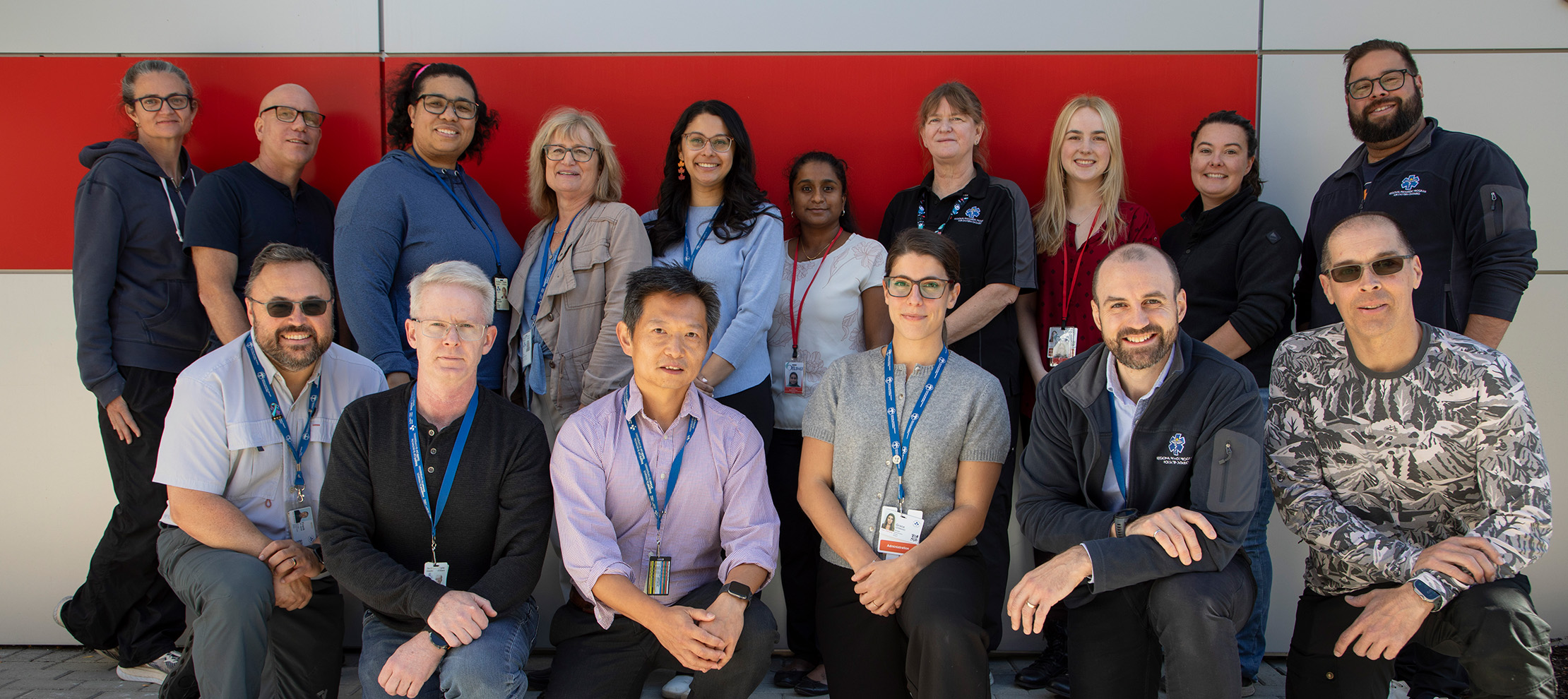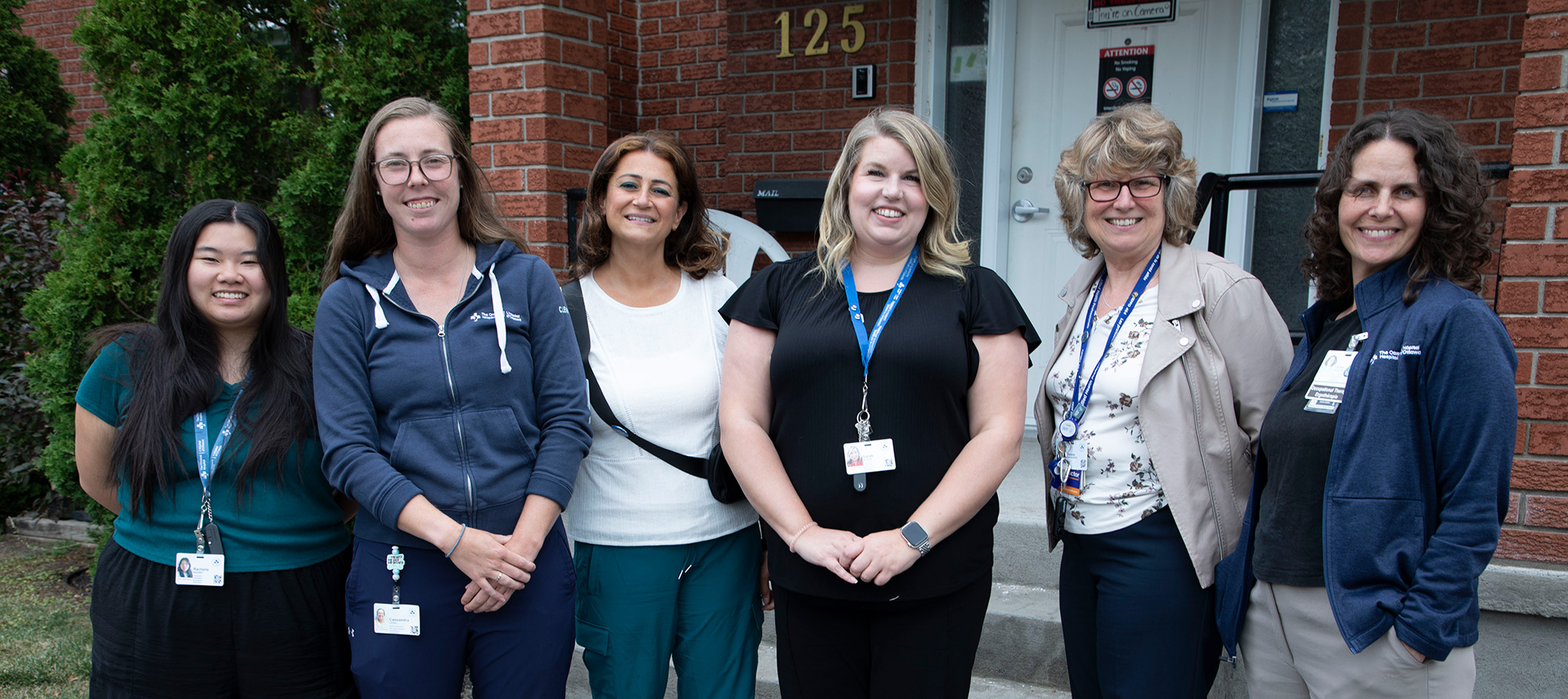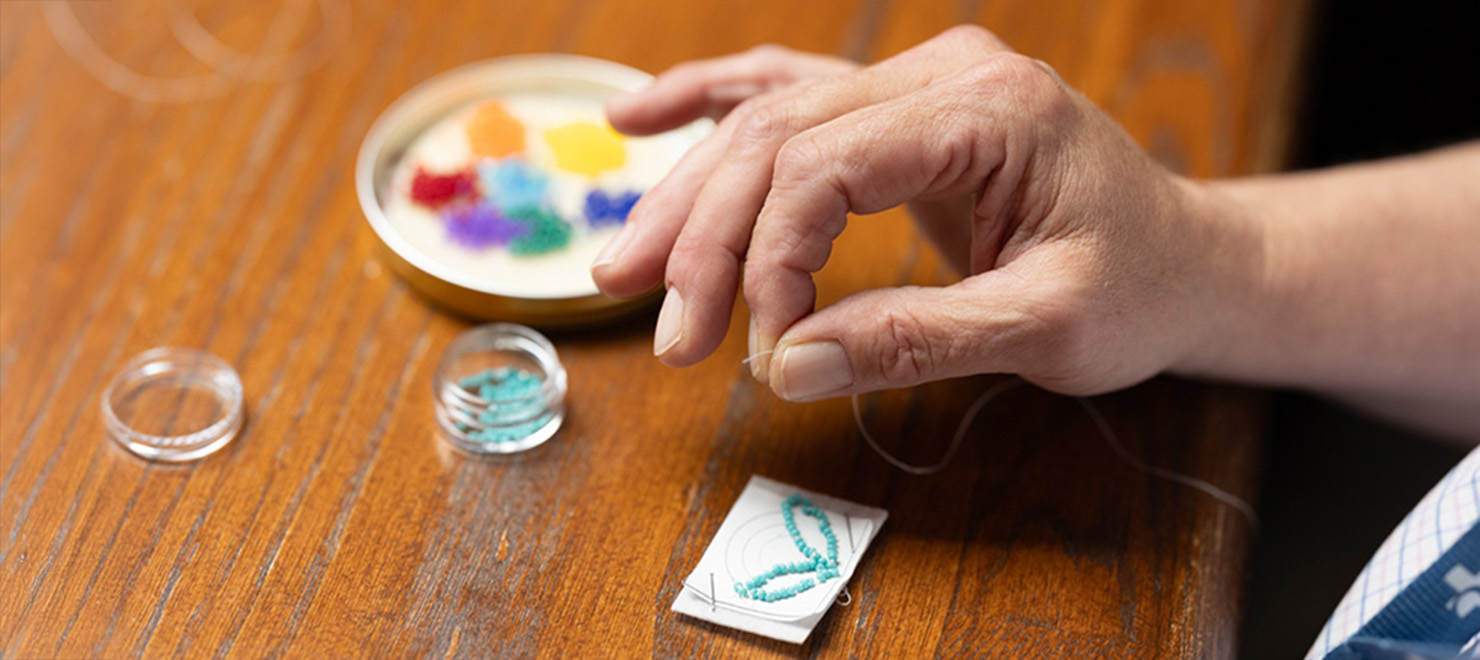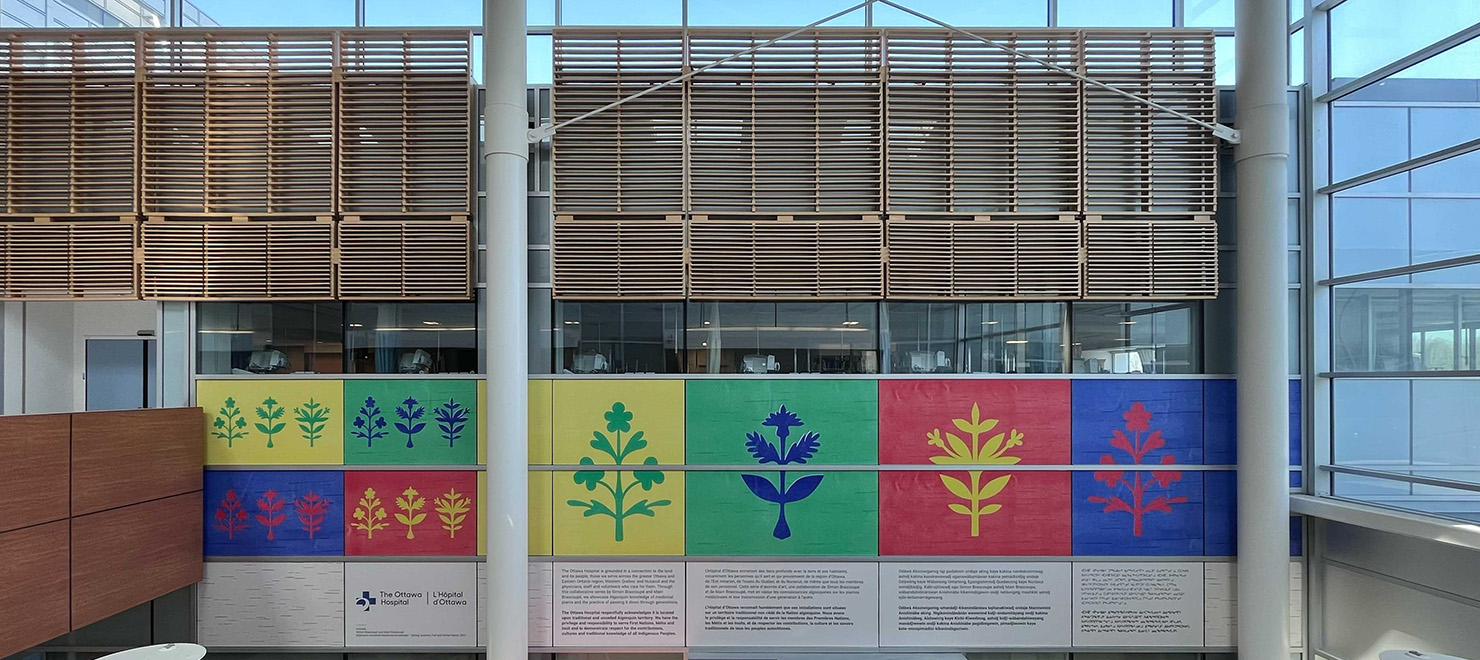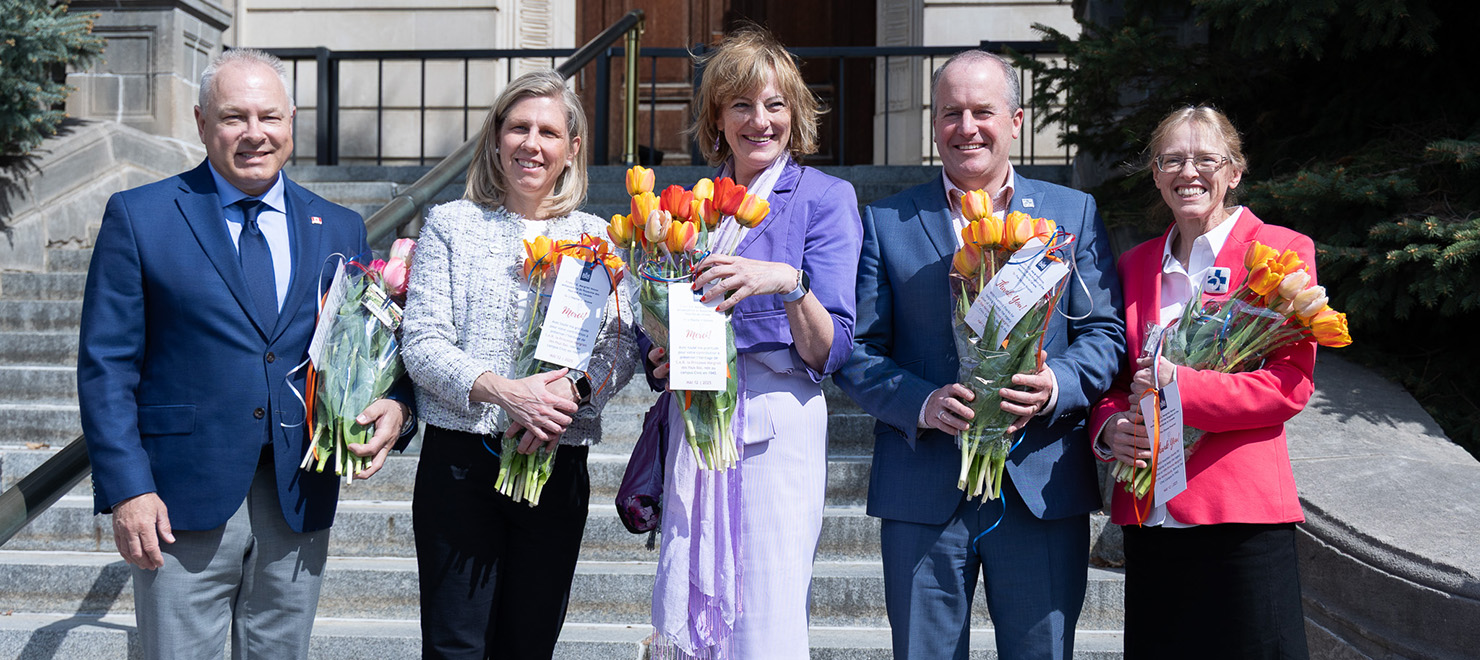
Geriatric medicine nurses Caiti (left) and Sabrina (right) teamed up to optimize recycling on their unit.
At The Ottawa Hospital, we work hard do our part to support a greener planet. In fact, one of our major priorities is to be a leader in sustainable health care — something we can only achieve with the help of our frontline staff.
And making a big difference doesn’t always mean making big changes or investments. Just ask Caiti Wallwork and Sabrina Duckworth.
The two geriatric medicine nurses launched a passion project that would see their unit nearly triple its recycling volume, diverting this waste from the landfill.
Here’s how they did it.
The green team unites
It was under the blue skies of Mexico that Caiti first thought of how our hospital could be greener…
“I had gone to a resort I’d been to a few times, and I saw that they replaced the plastic water bottles with large glass bottles in the room and had water stations on each floor,” recalls Caiti, who’s Manager of Clinical Services on the Geriatric Medicine Unit at the Civic Campus. “That led me to think about what we could do at the hospital that would be pretty easy and make a big environmental impact.”
Even before Caiti had settled on an idea for her project, Sabrina stepped forward to co-lead. “I was on board right away,” says Sabrina, who had just started on the unit as a registered practical nurse.
And everyone on their unit was soon on board, too. The project was also championed by the hospital’s Environmental Services and Environmental Sustainability teams and sponsored by Mike Lejeune, Director of Clinical Support Services and Employee Scheduling.
Their many collaborators helped them come up with a specific goal for the project: With so many recyclable items ending up in the garbage can, the unit would aim to divert all non-hazardous recyclable waste from the landfill.
“This was very much a ground-up, frontline staff initiative that everyone felt very passionate about,” says Caiti.
Bin it to win it
To help everyone on the unit understand which items go in which bin, the duo took pictures of common waste products and put them above recycling stations and on a big poster hanging in the unit’s kitchenette. FYI: Did you know that you can recycle Tim Hortons lids in the blue bin?
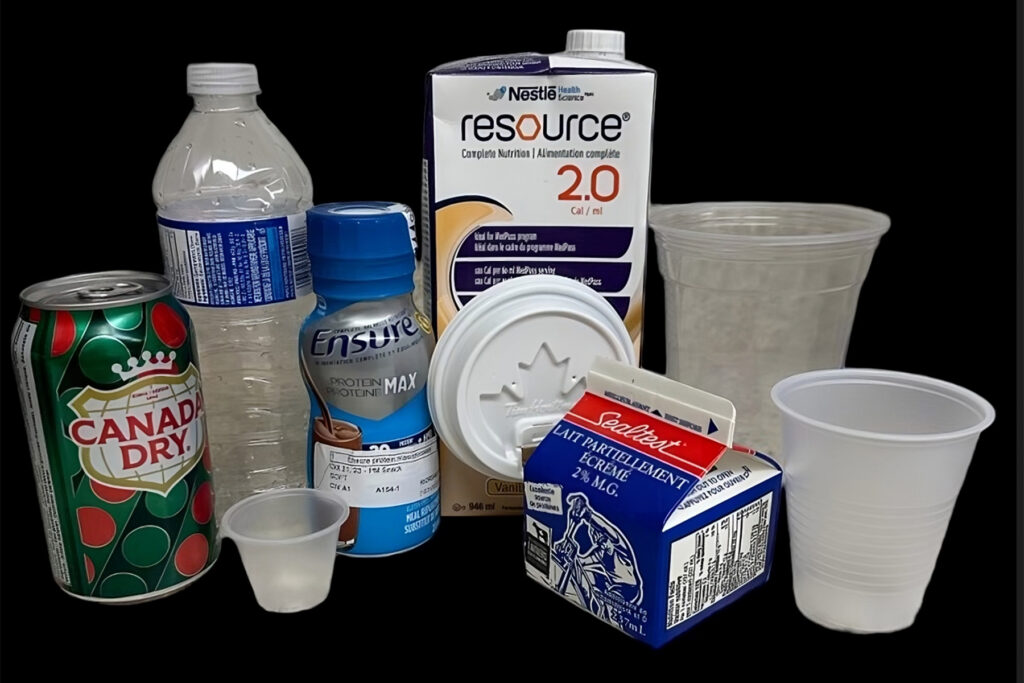
They also added more recycling bins throughout the unit and optimized where the bins were placed. To name just one example, the garbage bin in the unit’s kitchen was originally placed right in front of the door while the recycling station was further away. Caiti and Sabrina just switched their positions.
“People are more likely to recycle if they see the recycling bin first before the garbage bin,” explains Sabrina.
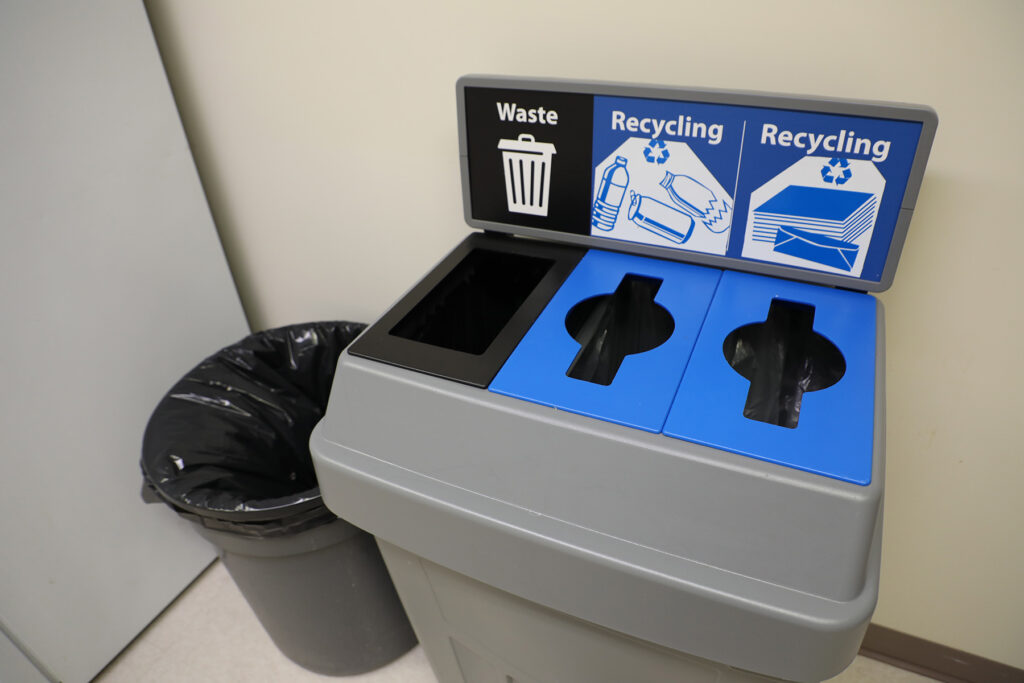
Myth busting was also key to the project’s success. A rumour has long floated around the hospital that our recycling bins are just emptied into the garbage. This persistent myth has discouraged some of our staff from recycling. During team huddles, Caiti and Sabrina told their colleagues what actually happens: Across our main campuses, all waste is picked up by our Environmental Services team and brought to the waste processing area, where it’s meticulously triaged into 19 different streams, including confidential paper, plastic and mixed containers, and cardboard recycling.
With their project in full swing, Caiti and Sabrina noticed that the recycling bins were finally filling up…
Measuring their success… or weighing it
The green team wanted to measure the impact of their project, so every day for six months, they weighed the unit’s recycling with a luggage scale.
Before they kicked off the project, Caiti and Sabrina found that their unit was recycling an average of 9.6 pounds of waste per week — and they wanted to hit a goal of 20 pounds per week. Towards the end of the six-month trial, the unit was diverting an average of 28.7 pounds of waste away from the landfill each week!
The daily weigh-ins may have come to an end, but the unit’s staff is still as motivated as ever. “There’s very rarely any recyclable items in our garbage anymore,” reports Caiti.

Inspiring others to follow in their (environmental) footprints
What started as a small passion project on just one unit is now becoming something much bigger. “That was our goal from the very beginning,” says Caiti.
The hospital’s Environmental Sustainability team has taken the key learnings from Caiti and Sabrina’s project and turned them into a helpful recycling resource for our staff to scale up their success across our campuses. Available to all teams across the hospital, this digital toolkit includes a list of recyclable items, a checklist of where recycling bins should be placed and more helpful waste reduction tips.
If frontline staff can change our hospital’s recycling habits, they can also change other areas of the hospital. “Hopefully, our project will inspire and motivate somebody else at the hospital who sees something that can be fixed or improved,” says Caiti. “And ideally, the success of our work will make them feel like they have the power to make that change.”
More environmental wins at The Ottawa Hospital
- Sustainability is at the forefront of all design considerations for The Ottawa Hospital’s new campus and will integrate into the design of the buildings, landscape and social spaces.
- With just a few simple fixes and replacements, our facilities team has massively reduced the carbon footprint at the Riverside Campus — the equivalent of taking 229 cars off the road for a year.
- Here are a few more things The Ottawa Hospital is doing to care for the health of our patients, staff and planet.

Support patient care and research at
The Ottawa Hospital
You might also like…
How we’re helping over 1,400 paramedics enhance patient care and safety
The Regional Paramedic Program for Eastern Ontario (RPPEO) is on a mission to enhance what happens after you dial 911. Here are three new ways this team is helping paramedics deliver better, safer care to their patients.
What to do in an emergency: New first aid video series on YouTube
Would you know what to do if you saw someone experience a stroke, heart attack or opioid overdose? We’ve launched a series of easy-to-follow videos on YouTube that walk you through how to respond to common first aid emergencies.
How the Robin Easey Centre supports recovery after a brain injury
“When our clients have a purpose — even something as simple as a meaningful activity — it gives them new hope in life.” In this short Q&A, discover how the team at the Robin Easey Centre helps clients rebuild their daily routines and regain their independence after an acquired brain injury.
Bringing communities together, one stitch at a time
In celebration of June being both National Indigenous History Month and Pride Month, The Ottawa Hospital hosted a beading workshop for Indigenous and 2SLGBTQIA+ staff and their allies.
A guide to services at The Ottawa Hospital for Indigenous patients and families
At The Ottawa Hospital, we are committed to providing culturally safe care for First Nation, Inuit and Métis patients and families. We are working with Indigenous partners to identify ways we can make your time in hospital more welcoming. Here are some of the ways we’re doing that now.
From Civic Campus to new campus: Dutch Ambassador visit marks ongoing legacy at The Ottawa Hospital
Dutch Ambassador Margriet Vonno visited our Civic Campus to present tulips to hospital staff, honouring the longstanding bond between Canada and the Netherlands and celebrating Princess Margriet’s legacy as The Ottawa Hospital looks to the future of health care.


 To reset, hold the Ctrl key, then press 0.
To reset, hold the Ctrl key, then press 0.
